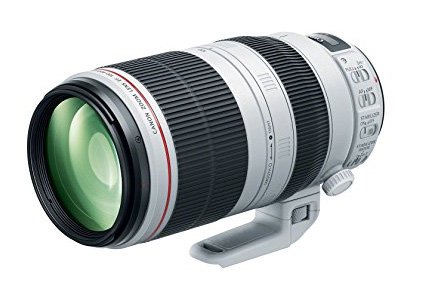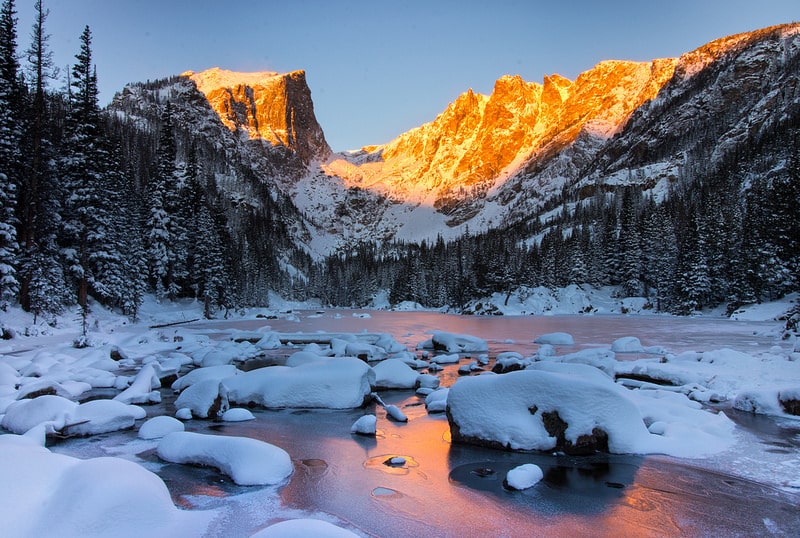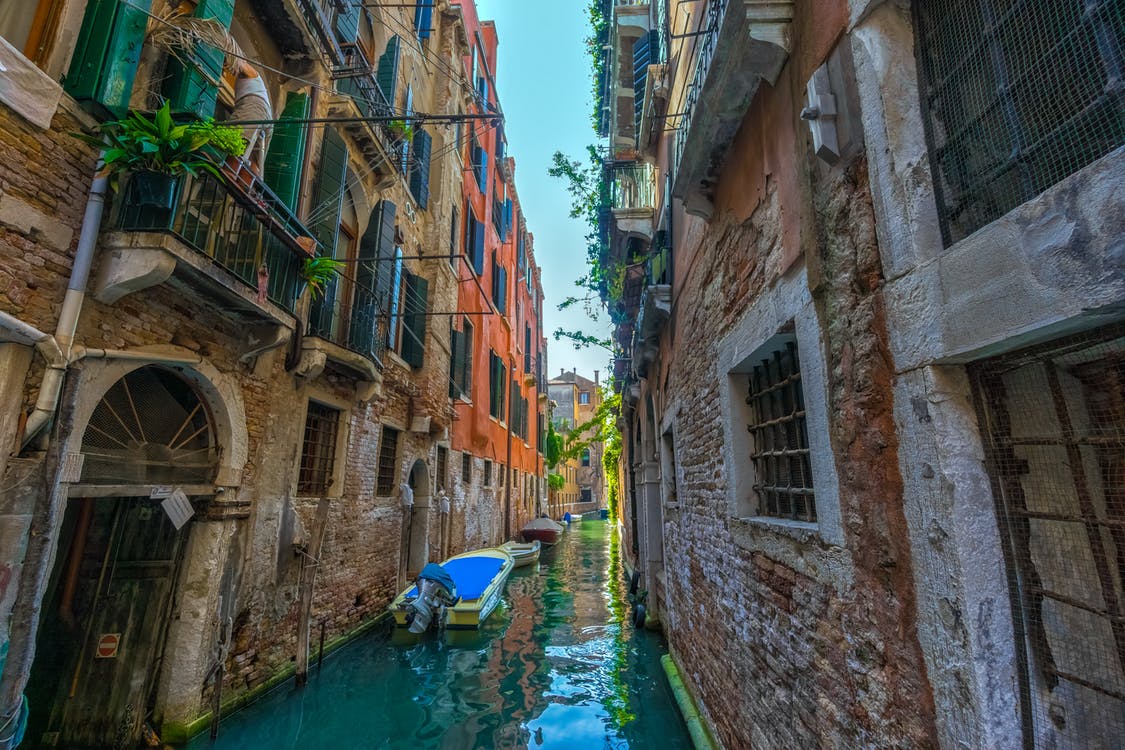Sports photography can be a tricky subject to shoot. So we’ve created this guide to the best Canon Sports and Action Lenses to help you navigate the complexities.
If indoors, you need to freeze the action by selecting a fast shutter speed, but you’re often limited by the low amount of light available. Most lenses don’t have apertures big enough to let in more light so you’re left with raising the ISO speed and this doesn’t always look good on every DSLR.
For outside sports, it’s a lot easier since the sun provides plenty of light. Shooting with shutter speeds over 1/250 is not a challenge, even if the lens you use has an aperture of f/5.6.
Table of Contents
ToggleWhat are the best Canon sport lenses?
Chances are, you won’t only shoot sports, so before buying a lens you should consider what else you want to shoot with it. Perhaps it’s animals, races, wildlife, portraits or anything far away.
Shooting inside most of the time? Invest in a good zoom lens for your Canon camera with a big aperture (f/2.8) or a good prime lens that can go as big as f/1.4. Every bit of light helps indoors! Alternatively, you can also use any of the zooms with smaller apertures but you will have to raise the ISO speed if there’s not enough light.
Below, we share our top picks for sports photography that we feel give you the most for your money in terms of optical quality, focal length and focusing speed.
Best Canon Zoom Lenses for Sports:
- Canon EF-S 55-250mm f/4-5.6 IS STM
- Canon EF 70-200mm f/2.8L IS II USM

- Canon EF 70-300mm f/4-5.6 IS II USM
- Canon EF 70-300mm f/4-5.6L IS USM
- Canon EF 100-400mm f/4.5-5.6L IS II USM
Best Canon Prime Lenses for Sports:
 Canon EF 400mm f/2.8L IS II USM
Canon EF 400mm f/2.8L IS II USM- Canon EF 300mm f/2.8 L IS II USM
- Canon EF 200mm f/2.8L II USM
- Canon EF 135mm f/2L USM
- Canon EF 85mm f/1.8 USM
- Sigma 50mm f/1.4 Art DG HSM
How to Choose a Canon Lens for Sports?
1. 200mm? 300mm? How much focal range do you need?
For the large majority of sports, 200mm will be more than enough to get either your main subject or the surroundings. If using a zoom like the 70-200mm, you’re also covered for smaller arenas.
If you know you’ll be far away from the action then a 300mm or even 400mm lens would be better (and sometimes even too short!)
One thing you should note is that if you have an APS-C camera (all from Rebel T6 to Canon 7D II) then every lens you put on will act as if it is 1.6x longer due to the crop factor APS-C sensors have. In reality, this means that a 100mm lens you put on an APS-C will have the same field of view as a 160mm lens on a full frame camera (100mm x 1.6 = 160mm). This is a huge benefit if you want to get as close to your subject without spending a lot of money. Both types of sensors are excellent for sports though.
Here’s a really useful Focal Length Required Calculator.
2. Fast Auto Focus (USM)
This is a must! With people constantly moving, you want a lens that can not only quickly focus, but accurately as well.
All lenses on our list except for the fist one feature USM (Ultra Sonic Motor) for the fastest focusing available. These motors are also really silent and will lock onto your subject with no trouble, although in super low light situations you might experience some hunting. Having FTM (Full Time Manual focus) helps at such occasions as it allows you to manually adjust the focus without switching any buttons; it saves you time and in sports this matters.
The 55-250mm that comes with a STM (Stepping Motor) motor is also quick and usable for sports, but won’t be as fast as the more expensive lenses. Unless shooting indoors with bad light, you won’t usually have any issues with the accuracy.
Your Canon DSLR camera and the focusing mode also play a big role. Check out this great video and this article for sports tips and tricks.
3. Tips & Features
Image Stabilization is not required since your subjects won’t usually be still, but it will help stabilize the image in your viewfinder when taking a shot. It doesn’t hurt having IS, but it’s also not a big deal if you get a lens without it.
If shooting with heavy prime lenses, bring a monopod (check out our guide on best monopods) so you won’t get tired after a few seconds of hand holding. Your shots will be sharper too, especially if shooting indoors.
For outdoors photography we also recommend buying a rain cover just in case the weather gets bad. Canon’s L lenses are weather-sealed but it doesn’t hurt being even more protected.
Best Canon Zoom Lenses for Sports in 2022
If you decide to buy anything after clicking on our Amazon links, you automatically support us. It’s what allows us to write guides such as this one.
1. Canon EF-S 55-250mm f/4-5.6 IS STM
The Canon EF-S 55-250mm f/4-5.6 IS STM is highly affordable and provides an excellent combination of reach, quality and size for the small price.
Seeing as it’s an EF-S lens (and the only one on this list too), it will only fit on an APS-C camera. Because of the 1.6x crop factor, it’s actually equivalent to a 88-400mm telephoto! It’s perfect for any action outside, sports, animals and even for portraits.
Image quality is also surprisingly good at both 55mm and 250mm lengths. In fact, it’s similar to the 300mm below in terms of quality and chromatic aberration. It’s definitely usable at f/4 and f/5.6 at both ends, but sharpness gets even better at f/8. Because of this you wouldn’t want to use it indoor, simply because the aperture sizes aren’t suited for it.
To auto focus, the lens uses STM (Stepping Motor) technology that makes focusing nearly silent. Thanks to this, it’s great for video recording where the camera won’t pick up any lens focusing noise! It’s also quite quick and can follow the subject well, but it’s not something you can compare to the more expensive L lenses with a USM motor. On a sunny day you’ll rarely encounter any hunting, but with low light/bad contrast you will experience it. For the price, we can’t complain much.
An extremely welcome feature to have is Image Stabilization, and the 55-250mm IS STM helps up to 3.5 stops. At 250mm, this will help a lot as the longer you’re at, the more blur will be visible if you move (even if you’re not tired). The closest focusing distance is 0.85m / 2.79 feet, and the lens only weighs 375g / 13.2 oz.
You can buy it at Amazon or see more reviews here.
2. Canon EF 70-200mm f/2.8L IS II USM
For many years, the Canon EF 70-200mm f/2.8L IS II USM has been crowned as the ultimate indoor and outdoor sports lens for both FF and APS-C cameras.
Why? Because for a zoom, the image quality matches that of many expensive prime lenses. Sharpness, colors and contrast are all top notch.
Then there’s the f/2.8 aperture that makes it ideal for indoor sports and many more things; portraits, sports, wildlife, indoor action, concerts, events, weddings etc. Besides having f/2.8 to work with in low light situations and blur the background, the lens is also equipped with Image Stabilization that helps you up to 4 stops.
Focusing is super quick and accurate so no complaints there. This is a work horse and the price is well worth it.
As with the majority of L lenses, it lens feels solid and is weather sealed so you can safely use it in tough weather conditions. It’s also the heaviest of 70-200mm lenses, here’s the breakdown:
70-200mm f/2.8L IS II USM – 52.6 oz (1490g)
70-200mm f/2.8L USM – 46.2 oz (1310g)
70-200mm f/4L IS USM – 26.8 oz (760g)
70-200mm f/4L USM – 24.9 oz (705g)
If you’re only after the best and need IS, obviously get the f/2.8L IS II USM. However, if you know you won’t need IS or even f/2.8, and want a lighter lens, you’d be better off with any of the f/4L versions. They’re all worth the price and deliver great quality images.
You can buy it at Amazon or see more reviews here.
3. Canon EF 70-300mm f/4-5.6 IS II USM
The Canon EF 70-300mm f/4-5.6 IS II USM offers 100mm more zoom than both lenses above, and it’s the cheapest full frame compatible zoom lens that we recommend.
Because of the aperture and focal length it’s more aimed at wildlife photographers but can just as well be used for outdoor sports, races and planes.
It replaces the 70-300mm f/4-5.6 IS USM released in 2005. Optically, it’s more usable from 250 to 300mm, shows less chromatic aberration and more contrast.
Image Stabilization is 1 stop better (4 stops) and it features a Nano USM motor for focusing. It’s silent, quick and more accurate than the 55-250mm above. It also looks cooler and has an LCD display that displays information such as focal length (also when on an APS-C sensor), aperture and more. Not really that useful, but can’t complain.
It costs $100 more than the first version, and $250 more than the 55-250mm. It might be a tough decision to pick one, but if you’ve got a FF sensor and don’t want to spend much, the 70-300mm II is a great option. For APS-C users, the image quality is more or less identical to the 55-250mm and the biggest difference is the AF speed and of course the extra 50mm. For birds and really far animals, this will make a difference, but it’s up to you to decide. If shooting inside, you’ll have to boost the ISO sensitivity to at least 800.
You can buy it at Amazon or see more reviews here.
4. Canon EF 70-300mm f/4-5.6L IS USM UD
Since 70-300mm zooms are extremely popular, Canon also released the Canon EF 70-300mm f/4-5.6L IS USM UD.
First, we’ll talk about the things that are the same or almost identical to the non-L version. The lens has a variable aperture so you’ll have to raise the ISO when shooting indoors at 300mm because you won’t be getting enough light. Unless you have an older DSLR, this shouldn’t be that big of a problem.
The second is the image quality; this is also not the reason for the bigger price as both lenses are equally as sharp and it’ll be hard to spot any differences in corners and center. It does have a floating focusing mechanism, but they both show good contrast, sharpness and colors, even wide open. The Image Stabilization system also helps up to 4 stops.
As you can see from the design and the red ring, the L lens is built much much better, and also feels like it. Not only that, but is actually weather sealed, something you’ll definitely appreciate when shooting outside in bad conditions. Alternatively, you can also use it for wildlife in rain etc.
Thanks to Ring type USM, auto focus is very fast and accurate even in tougher conditions. It’s perfect for both APS-C and FF shooters that are looking for a fast zoom to use outside without worrying about the weather, and if the shot will come out fine, or if your gear is going to make it. The non-L version does seem like a better option if you don’t care about weather sealing, but if you know for yourself that you spend a lot of time outside/traveling and can’t risk anything, and want better AF, it’ll be worth it. A bit heavier with 2.31lbs (1050g) vs 25.4 oz (710g), but still nothing compared to some other lenses on this list.
You can buy it at Amazon or see more reviews here.
5. Canon EF 100-400mm f/4.5-5.6L IS II USM
The Canon EF 100-400mm f/4.5-5.6L IS II USM is an optically excellent lens with superb build quality.
Compared to the first version of the 100-400mm, the one change you’ll immediately notice is that the lens no longer uses the old push/pull type of zooming and instead features the more common twist and turn as 99% lenses do.
It’s a tad bigger and heavier at 55.4 oz, but also has a 77mm filter thread size. Image quality, focusing speed and accuracy are both much improved, especially when shooting wide open at 400mm.
Then there’s the Image Stabilization that was upgraded from 2 stops to 4 stops of help. In the field, that makes a huge difference (1/30 instead of 1/125). Because of the “wide” 100mm length on this zoom, you can also use it for close sports, where IS will definitely help a lot. It’s not an indoor sport lens, but feel free to bump up the ISO to 3,200+ if you’re looking for fast speeds.
It’s quite expensive and mostly aimed at wildlife photographers. But in a way, sports is like wildlife except that instead of animals, you’re now taking pictures of people, just with much less risk.
You can buy it at Amazon or see more reviews here.
Best Canon Prime Lenses for Sports
These are the best Canon Prime lenses which are great for indoor sports but also for animals and portraits.
1. Canon EF 400mm f/2.8L IS II USM
For both outside and inside sports, this is the best there is. The Canon EF 400mm f/2.8L IS II USM is far from cheap though.
It is razor sharp in the center and corners, focuses quickly and is more or less like the 300mm f/2.8L below, but with an extra 100mm.
That increase in length also comes with a few unwanted features. It’s a lot longer and heavier (8.49 lbs vs 5.19 lbs) than 300mm, and weighs almost twice as much as the DO version (but that one has f/4). You’ll have to decide which one is more important; an extra f-stop of light, or less weight to carry with you.
A monopod/tripod is a must for all of these heavy prime lenses, but you still need to carry everything and sometimes it can make a difference between getting the shot or not going out at all.
Despite complaining about the weight, the second version of this 400mm f/2.8L II is actually a lot lighter than the first version (8.49lbs vs 11.85lbs) and that alone would be a big reason for many to upgrade.
Like with the rest of Canon telephoto L lenses, it’s weather sealed and features SWC (type of coating) that reduces ghosting and improves contrast. Since dirt and water are easy to get on your gear when shooting, the front element uses fluorine coating that makes cleaning off any dirt or fingerprints way easier.
You can buy it at Amazon or see more reviews here.
2. Canon EF 300m f/2.8L IS II USM
Want an f/2.8 telephoto? The Canon EF 300mm f/2.8L IS II USM is not only great for wildlife, it’s one of the most popular lenses for indoor and outdoor sports photography too.
Auto focus is blazing fast and extremely accurate, like all other Canon telephotos that use the Ring type USM. To reduce hunting and improve the already fast AF focusing speed, you have 3 different distance limiters to choose from, depending on the distance of your subject. Its closest focusing distance is 6.6ft / 2.0m.
The biggest reason why you’d go with this lens is obviously if you need the f/2.8 aperture. Compared to f/4 (let alone f/5.6), the amount of light hitting your sensor is enormous and that’s why you won’t have to worry about shooting early in the morning or late during the day and raising your ISO a lot.
It features a new Image Stabilization system that works up 4 stops, and while hand holding is an option, we strongly recommend to use a monopod with it. It weighs 82.9 oz / 2350g so you’re gonna get tired quite quickly without investing in good support.
Telephoto f/2.8 lenses are expensive, but for a reason. You get a ton of light, fast auto focusing, excellent image quality and even with a 1.4x or 2x extender, auto focus will work with every Canon DSLR since the aperture at 2x is f/5.6. Overall quality and focusing speed do drop noticeably, but it’s still very usable for fast subjects. On an APS-C camera, it’s equivalent to a whopping 480mm f/2.8 lens!
You can buy it at Amazon or see more reviews here.
3. Canon EF 200m f/2.8L II USM
A more budget friendly prime is the Canon EF 200mm f/2.8L II USM.
It’s excellent for indoor sports, portraits and far away subjects. Because of the big f/2 aperture and long length, the background blur and bokeh look incredible.
Most people usually decide between the 70-200mm f/2.8L IS II and this one, so let’s see how they compare. They both have f/2.8 at 200mm and are nearly identical in image quality; excellent sharpness from both.
The 200mm f/2.8L USM obviously does not have any Image Stabilization added, and while this won’t be important for most sports since the subjects are constantly moving, it’s definitely a disadvantage.
It’s much lighter and smaller because of that; 1.7lbs / 765g compared to 3.28lbs / 1490g. None of these are super heavy but if you already find your gear tough to carry around, the lighter 200mm prime definitely wins here.
Closest focusing distance of the 200mm f/2.8L is 4.9 feet / 1.5m, while the 70-200mm can focus as close as 3.94 feet / 1.2m. For indoor use next to the players every centimeter makes a difference. On an APS-C camera, 200mm might be too long so do consider the lens below.
You can buy it at Amazon or see more reviews here.
4. Canon EF 135mm f/2L USM
The Canon EF 135mm f/2L USM may be one of the oldest lenses on this list, but it’s still optically excellent.
With 2 UD elements, it’s sharp in corners and the center at f/2, but gets even better at f/2.8. Colors, bokeh and contrast are all superb.
Thanks to USM, auto focusing is very fast and excellent for both fast and slower subjects, even in bad light. You can also use the FTM (Full Time Manual focus) if the lens hunts too much and it feels really smooth. Aperture f/2 is 1 f-stop bigger than f/2.8, so this means you can shoot with even faster shutter speeds.
The closest focusing distance is also quite impressive at 3 feet/0.9m. 135mm length is usually better than 200mm if you don’t know how close to the players you’ll be shooting because you can always crop a little bit if you’re too short.
If you’ve never shot inside with a prime before, it can be quite confusing what length you will need, so try to see the location with a zoom upfront, or use your current lens and pretend you’re shooting the game at the position you know where you’ll be at.
Because of its beautiful bokeh and colors, the lens is also great for weddings, portraits and animals.
You can buy it at Amazon or see more reviews here.
5. Canon EF 85mm f/1.8 USM
The Canon EF 85mm f/1.8 USM has a focal length that most people consider to be the sweet spot for portraits, and it’s true. You’re not getting any distortion as it’s not too wide, yet you’re not too far away from your subject that you couldn’t communicate normally.
It’s also long enough for close indoor sports, and on APS-C its field of view is identical to a 135mm lens on FF.
For such a low price, it’s a steal. It has excellent and sharp optics, beautiful colors and bokeh. Auto focus is also fast and by far faster than the 85mm f/1.2L, not to mention cheaper. Aperture f/1.8 will be of great help if mainly shooting indoors where even an extra third-stop can make a difference.
Another good thing compared to lenses above is the small size and compact design. It feels solid yet light, but it’s not as prepared for bad weather as L lenses.
The 85mm focal length is great on both FF and APS-C cameras. You can take pictures of your subject without being extremely close so it’s also good for concerts and weddings.
You can buy it at Amazon or see more reviews here.
6. Sigma 50mm f/1.4 Art DG HSM
We thought about Canon’s 50mm f/1.4, but if you really need f/1.4 then the Sigma 50mm f/1.4 Art DG HSM outperforms it. It does cost more indeed, but at $899 it’s again a great deal for the money.
At f/1.4, it’s got better contrast and sharpness than all Canon 50mm lenses (f/1.8, f/1.4 and f/1.2L). It’s more or less expected as it costs $500 more than the f/1.4 version, and is also newer than all of them (2014). If size and weight are important to you, do note that it’s also bigger than all of them at 3.4 x 3.9″/85.4x x 99.9mm and 28.7oz/815g. It’s by no means a compact 50mm lens, but then again it’s what comes with excellent optical quality.
With 13 elements in 8 groups, it’s no surprise it’s that big. The minimum focusing distance is 40cm, 5cm shorter than Canon’s 50mm f/1.4 and f/1.2L at 45cm.
We only recommend 50mm lenses for APS-C. On a full frame DSLR, unless you are really close to your subject, it won’t be long enough.
You can buy it at Amazon or see more reviews here.
Our Recommended Canon Sports Photography Lenses
Consider this a shorter, more direct version of this entire guide. Simply what we think gives you the absolute most for your money and what we’d go with personally.
Even though all lenses above are awesome, sometimes less options makes it easier to decide.

The Best Canon Zoom Lenses:
- Canon EF-S 55-250mm f/4-5.6 IS STM – If you’ve got an APS-C camera and want something cheap and good, this is it
- Canon EF 70-200mm f/2.8L IS II USM – For maximum reach with great quality. but a smaller aperture at 600mm, the Sigma is awesome and quite affordable

The Best Canon Prime Lenses:
- Canon EF 400mm f/2.8L IS II USM – Expensive but has a large f/2.8 aperture, more reach than any other lens and is optically amazing. Heavy too!
- Canon EF 200mm f/2.8L II USM – Best for FF shooters shooting indoors (basketall, volleyball etc.) with fast auto focus.
- Canon EF 85mm f/1.8 USM – Great for APS-C shooters that are relatively close to the field, or for FF shooters that don’t need much reach.
Best Canon Lenses For:
First and foremost, I’m a husband and father. Then professionally I’m photographer, designer, blogger, and Esty store owner. My homebase is near the stunning Wasatch mountains in Utah but I love traveling with my family as part of our homeschooling journey. I also love teaching and helping out others. My faith is one of the biggest aspects of my life and brings be a consistent joy that I haven’t found in anything else. My main blog is BestPhotographyGear.com and I strive to make photography simple for anyone looking to learn or find gear for their individual needs. By nature, I like to study, research, and analyze things and I use that help provide the best advice and reviews I can.















